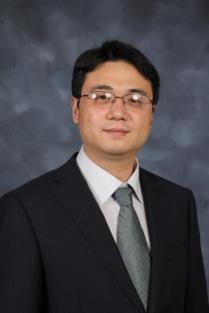
Dr. Jingxian Wu
Associate Professor, Department of Electrical Engineering University of Arkansas
Monday, March 19, 2018
6:00PM – HEC 113
Abstract
Quickest change detection (QCD) aims to minimize the detection delay of an abrupt change in probability distributions of a random process, subject to certain performance constraints such as the probability of false alarm (PFA). It has a wide range of applications, such as wireless network data analysis, intrusion detection, anomaly detection, quality control, financial market analysis and medical diagnosis, etc. In this talk I will first give an overview of existing quickest change detection algorithms and discuss some of our recent results. Then I will present the application of QCD on the detection of bearing faults of wind turbines (WT). The QCD algorithm is developed by analyzing the statistical behaviors of stator currents generated by the WTs. It is discovered that, at a given frequency, the amplitude of stator current follows the Gamma distribution, and the presence of fault will affect the parameters of the Gamma distribution. Since the signature of a fault can appear in one of multiple possible frequencies, we need to monitor the signals on multiple frequencies simultaneously, and each possible frequency is denoted as a candidate. Based on the unique properties of WT bearing faults, we propose a new multi-candidate QCD (MC-QCD) algorithm that can combine the statistics of signals from multiple candidate frequencies. The new algorithm does not require a separate training phase, and it can be directly applied to the stator current data and perform online detection of various possible bearing faults. The theoretical performance of the proposed algorithm is analytically identified in the form of upper bounds of the PFA and average detection delay (ADD).
Biography
Jingxian Wu received the B.S. degree in Electrical Engineering from Beijing University of Aeronautics and Astronautics, Beijing, China, in 1998, the M.S. degree in Electrical Engineering from Tsinghua University, Beijing, China, in 2001, and the Ph.D. degree in Electrical Engineering from the University of Missouri, Columbia, in 2005. He is currently an Associate Professor with the Department of Electrical Engineering, University of Arkansas. His research interests mainly focus on statistical signal processing, large scale data analytics, and wireless communications. He served as a symposium or track cochair for various international conferences, including the 2012 IEEE International Conference on Communication, the 2009, 2015, and 2017 IEEE Global Telecommunications Conference, etc. He is an Associate Editor of the IEEE ACCESS, and served as an Editor of the IEEE TRANSACTIONS ON WIRELESS COMMUNICATIONS from 2011 to 2016, and an Associate Editor of the IEEE TRANSACTIONS ON VEHICULAR TECHNOLOGY from 2007 to 2011.